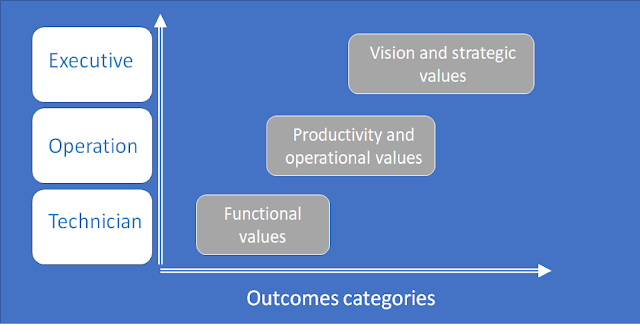Outcome-based selling –
In 2008 I read an interesting article from Harvard
Business Review about “Value-Based
Analysis” (VBA) and the consequences of adapting VBA in my sales methodology
Since then, the concept has evolved, and VBA morphed into
Outcome-Based selling.
For a long time, I knew how to capture customers’
attention (and budget), and it was important not to dwell too much on solutions or features but instead
VBA morphed into Outcome-based selling
But outcome-based selling goes further than just selling
benefits, in short,
Sounds simple enough, but outcome-based selling is hard. It
is not enough to arm yourself to the teeth with feature-based battle cards, but
you need to know to draw the linear path from a business outcome to a specific
technology initiative and how the product can further that initiative.
So how to do it?
We started by systematically list all the use-case we bring
our customers, then linked each use case with a clear business outcome and
quantify each outcome with real impact for the customer. In the end, we be tracked in order
Make it easy for Buyers and Partners
After doing that work you may
realize that few "outcomes" could be stitched benefits the solution may be easier to understand for the buyer or
corresponds to a popular requirement for the industry you address.
Super Alignment
By agreeing with customers a clear Scope of Work including Benefits ,
Outcomes , Metrics and Monitoring of Metrics, it creates a clear blueprint between
customers and the company. It also creates an important link between pre-sales
and post-sales. The customer success team possess all elements needed for the
customers to be successful. These blueprints might be re
In conclusion
I have only scratched the surface of outcome-based selling and
I hope I have managed to show methodology
Outcome-Based selling has been a revelation to me for many
years – was not called – for them to adopt and use well the technique ). The concept is also very beneficial
for managing indirect channels and I might write on the subject in my next blog.
In the meantime, have a great time with your prospects.



